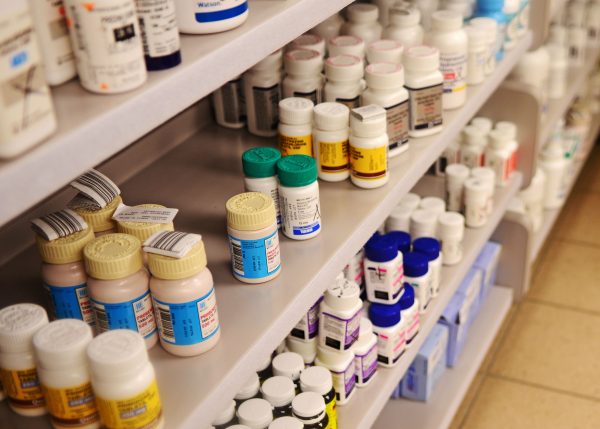On February 22, 2019, after public input from states and stakeholders, the U.S. Environmental Protection Agency (U.S. EPA) issued a final rule (84 FR 5816) regarding the management of pharmaceutical hazardous waste, defined as prescription pharmaceutical drugs that are expired, recalled, or otherwise unused. There are various effective dates beginning this August.
Nurses, aids, and housekeeping staff that handle these types of wastes are generally unfamiliar with the complicated rules of the Resource Conservation and Recovery Act (RCRA), which has created a regulatory challenge for healthcare facilities for quite some time. The U.S. EPA had originally proposed in 2008 to treat all pharmaceutical waste as universal waste instead of hazardous waste regulated under RCRA. This was later determined to not be a sufficiently protective regulatory approach to handling the waste, and a revised proposed rule was issued in September 25, 2015 that was recently finalized.
The new rule is intended to:
- Create regulations that are better suited for the healthcare sector to manage the waste pharmaceuticals properly;
- Eliminate the intentional disposal of hazardous waste pharmaceuticals down the drain (discharge to sanitary sewers);
- Reduce overlapping regulations with the Food and Drug Administration (FDA), the Drug Enforcement Administration (DEA), and other regulatory agencies;
- Provide clarity and consistency on how RCRA applies to reverse distribution and reverse logistics; and
- Regulate nicotine replacement therapies (NRTs) more effectively.

40 CFR Part 266, New Subpart P: The Management of Hazardous Waste Pharmaceuticals at Healthcare Facilities and Reverse Distributors
This rule applies only to the management of hazardous waste pharmaceuticals, and only at healthcare facilities and reverse distributors. Pharmaceutical wastes that are not subject to regulation as hazardous waste will include:
- Pharmaceuticals for reuse;
- Over-the-counter drugs (OTCs) for reuse;
- Recalled pharmaceuticals;*
- Pharmaceuticals under a preservation order;*
- Investigational new drugs;* and
- Household hazardous waste pharmaceuticals.
*The U.S. EPA defers regulation of these to other agencies until they are disposed—they are then regulated as waste.
The OTCs and other unsold retail items (medical devices, cosmetics, etc.) that have a reasonable expectation of being legitimately used/reused or reclaimed are not solid waste.
The Nicotine Amendment
The new rule amends the P075 RCRA waste code listing so that FDA-approved OTC NRTs will no longer be included under P075. This includes nicotine patches, gums, and lozenges, and these can be discarded as non-hazardous waste. Other unused formulations of nicotine must still be managed as P075 hazardous waste when discarded. This includes e-liquids/e-juices in e-cigarettes, cartridges, or vials; prescription nicotine (inhaler or nasal spray); legacy pesticides containing nicotine; and nicotine used in research and manufacturing.
Hazardous Waste Pharmaceutical Handling
This new rule creates several new definitions, most importantly:
- “Reverse Logistics Center” = accepts the return of non-prescription pharmaceuticals (OTCs, supplements, etc.) and all other unsold retail items (e.g. vehicle maintenance fluids, household cleaning products, other non-pharmaceutical chemicals) to evaluate their suitability for reuse in secondary markets.
- “Reverse Distributor” = accepts the return of unused or expired prescription pharmaceuticals from healthcare facilities. The healthcare facility will be credited for those pharmaceuticals. Pharmaceuticals are considered waste when received, and no re-distribution occurs.
OTCs and other unsold retail items that are sent through Reverse Logistic Centers are not wastes at the healthcare or retail facility if they have a reasonable expectation of being lawfully used or reused for their intended purpose, or reclaimed.
Hazardous waste pharmaceuticals that are sent to a Reverse Distributor may have value to the generator in the form of an expected credit. Therefore, if they are or may be expected to be creditable, they are classified as Potentially Creditable, are not handled as hazardous waste by the healthcare facility, and can be sent to the Reverse Distributor. They are subject to RCRA regulation when the Reverse Distributor receives them.
If a waste pharmaceutical is not creditable, it must still be managed as a hazardous waste by the healthcare facility, and new industry-specific requirements are established for training healthcare facility personnel handling the wastes, labeling containers, reporting, and manifesting. However, the healthcare facility does not have to track the quantity of hazardous waste pharmaceuticals it generates per month, and it does not have to segregate the acute and non-acute hazardous waste pharmaceuticals. This rule will make it much simpler for facilities to be in compliance.

Effective Dates
- The final rule is effective in states where RCRA administration has not been authorized (only in Iowa, Alaska, Indian country, and U.S. territories) as of August 21, 2019.
- Subpart P is more stringent than the old rules, and therefore, states authorized to administer RCRA must adopt a similar or more stringent regulation by July 1, 2021. If the state requires a statutory amendment to adopt the changes, then the state has until July 1, 2022 to adopt.
- The nicotine amendment is less stringent. It will be effective only if an authorized state adopts it, and there is no requirement or deadline to adopt.
- The ban on flushing hazardous waste pharmaceuticals becomes effective in all states on August 21, 2019. This applies to all healthcare facilities and reverse distributors.
For more information on this new rule, contact Beth Schwartz at bschwartz@cecinc.com or by phone at (877) 963-6026.
Post a Comment